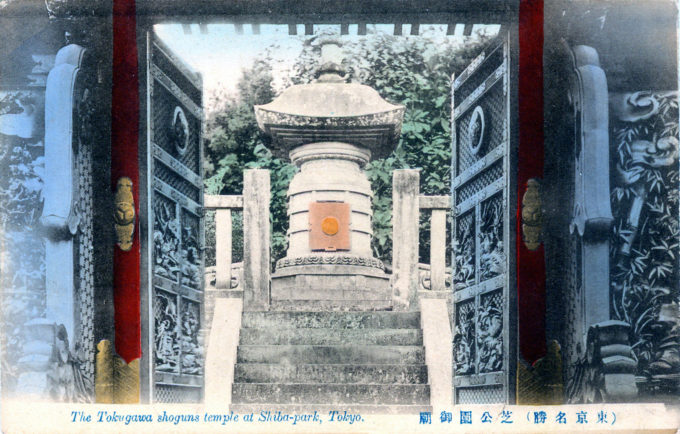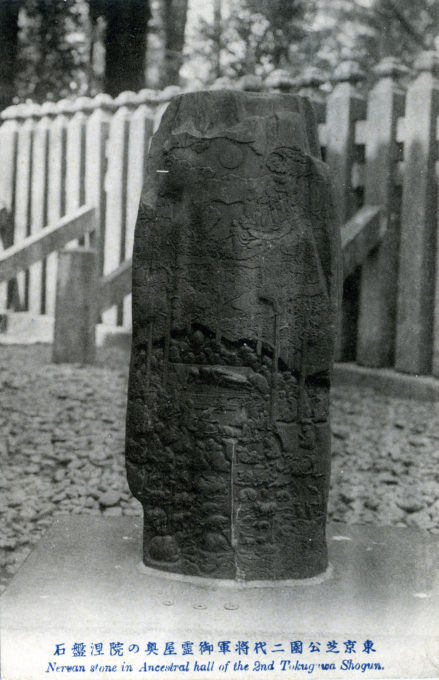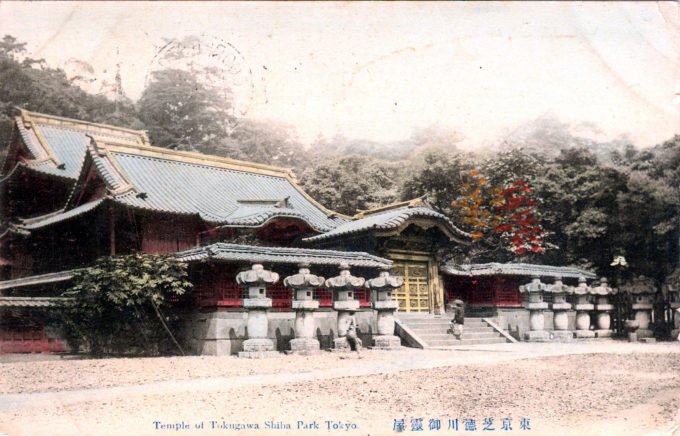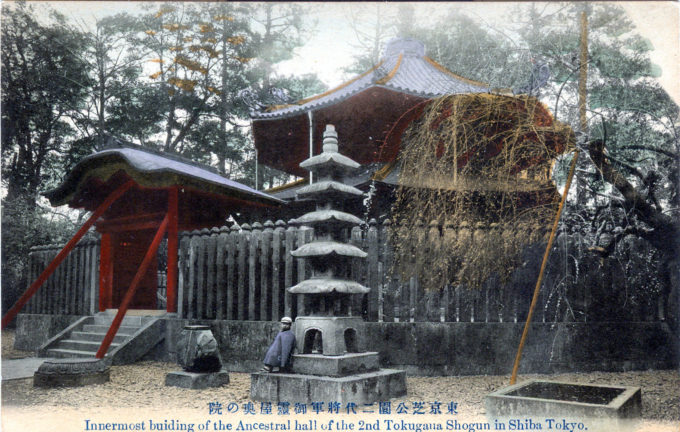
One of the Tokugawa burial sites at Zojo-ji, Shiba Park, Tokyo, c. 1910. Zōjō-ji is notable for its relationship with the Tokugawa clan, the rulers of Japan during the Edo period, with six of the Tokugawa shōguns being buried there.
See also:
Shiba Park, Tokyo
Zojoji Temple, c. 1910
Tokyo First Bazaar Co. (Kwankoba), Shiba Park, c. 1910
“Then in addition to the attractions of the Kwankoba [bazaar] itself, there is the fascination of its surroundings. It is in the romantic region now called Shiba Park, a neighbourhood once sacred as the precincts of the great Temple of Zozoji, honoured by the special patronage of the Tokugawa family, and the last resting-place of many of the Shoguns of that house.
“I shall not try to describe the marvels of the mausolea of the Shoguns, which stand each in its own grounds beside the main temple; their wonders of gold and colour, their carvings and find lacquer, have made them famous among the masterpieces of Japanese art.
“But I wish I could give you an idea of the exquisite beauty and solemnity of the grounds amidst which they stand, lonely in the midst of the rush of a city that has forgotten its past, silent save for the rustling of the wind in their solemn groves and the cries of the birds wheeling overhead; their glory of carved screen and golden wall, their gates and lanterns of stone and bronze, standing unnoticed from year to year under sun and storm.”
– Present Day Japan, by Augusta M. Campbell Davidson, 1908
- The Mausoleum of Sugenin, wife of Tokugawa Hidetada and mother of the 3rd Tokugawa shogun, at Shiba Park, Tokyo, c. 1910.
- Hak-kaku-do or “Octagonal Hall” contains the tomb of the 2nd Shogun, Hidetada, Shiba Park, Tokyo, c. 1910.

A carving representing Nirvana, Shiba Park, Tokyo, c. 1910. One of two stone carvings in the Octagonal Hall, dating from 1644, outside the tomb of the 2nd Shogun, carved by Yoshioka Shigetsugu (Soju) of Yedo.
“In the wood at the back is the Hak-kaku-do or ‘Octagonal Hall,’ containing the Tomb of the 2nd Shogun, Hidetada, the most magnificent specimen of gold lacquer to be seen in Japan, and one which no tourist should fail to visit. The interior walls are gilt over lacquer. Eight pillars covered with gilt copper plates support the roof.
“… Inside the shrine are an effigy of Hidetada and his funeral tablet (i-hai), the body being below the pavement. It is said to have been buried in a mixture of vermilion and charcoal powder to preserve it from decay. Outside this building are two curiously carved stones dating from 1644, the subject of one being the Entry into Nirvana or Death of Shaka [Sakyamuni], and of the other the five-and-twenty Budhisattvas coming with Amitubha (Anjida) to welcome the departed soul.”
– A Handbook for Travellers in Central & Northern Japan, Kelly & Company, 1881



